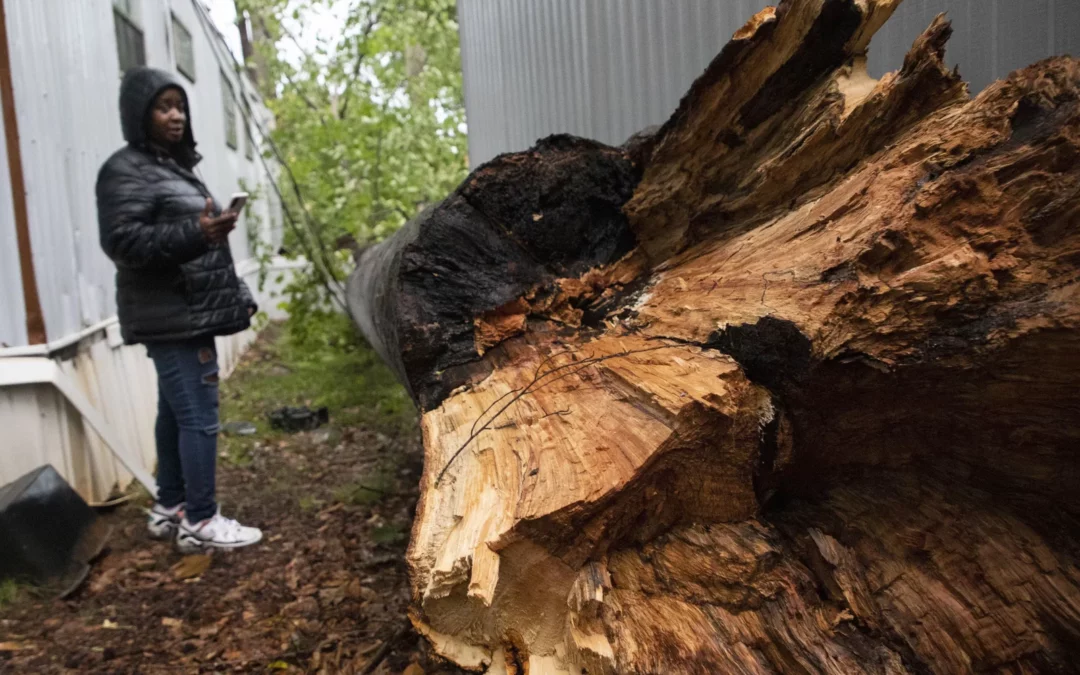Photo: A person inspects a downed tree at Shady Grove Mobile Home Park in Charlotte, N.C., Monday, Aug. 7, 2023. Thousands of U.S. flights have been canceled or delayed as forecasts warn of destructively strong storms, including tornadoes, hail and lightning.
Sean Mcinnis/AP
Article originally posted by NPR. By Joe Hernandez.
Meteorologists are warning millions of people across the East Coast to brace for major thunderstorms and other severe weather beginning Monday afternoon.
A strong storm system moving in from the Midwest and Great Lakes region ahead of a cold front is putting a large swath of the eastern U.S. at “enhanced” risk for severe weather, from Atlanta to Binghamton, N.Y.
Enhanced risk — a level 3 out of 5 on the National Weather Service scale — means numerous severe storms are possible across the area.
Parts of the Mid-Atlantic — including Baltimore, Washington, D.C. and Roanoke, Va. — are at an even greater “moderate” risk. The second-highest rating on the scale means widespread severe storms are likely.
“Dangerous storms with widespread very strong winds, large hail and a few tornadoes are likely this afternoon and evening across parts of the Mid-Atlantic,” the NWS said Monday morning.
There is also the potential for damaging straight-line winds and flash flooding, the NWS added.
Thousands of flights were canceled or delayed across the U.S. on Monday, according to the flight-tracking website FlightAware. At Hartsfield-Jackson Atlanta International Airport alone, more than 700 flights had been canceled or delayed by Monday night.
Federal weather officials were urging people to check with their local NWS forecast office for the latest information specific to their region and prepare multiple ways to receive weather warnings.
Record heat scorches the South
Meanwhile, forecasters are predicting record heat from western Texas to the eastern Gulf Coast, with temperatures from the “upper 90s to the middle 100s.”
The heat index — or what it feels like outside to the human body — could reach as high as 115 in those areas on Monday and Tuesday.
Dangerous daytime heat was expected elsewhere throughout the South on Monday and Tuesday as well, from the Southwest to parts of the Southeast and Florida. Excessive heat warnings and heat advisories were in effect in various areas across the region.
High heat plus dry ground conditions, low relative humidity and gusty winds combined to increase the fire risk in Texas, Arizona, Utah, Colorado and New Mexico.
Some parts of the U.S. have been struggling to stay cool amid record heat waves this summer, likely worsened by the effects of global climate change.
Phoenix, Ariz. — the fifth-largest city in the country — recently set a new record of 31 consecutive days with temperatures exceeding 110 degrees.

